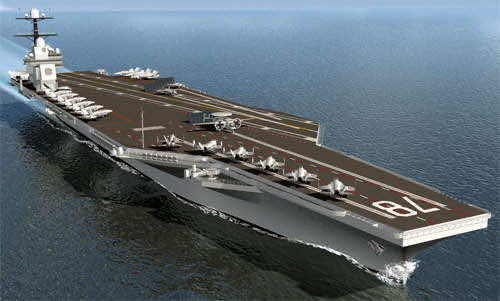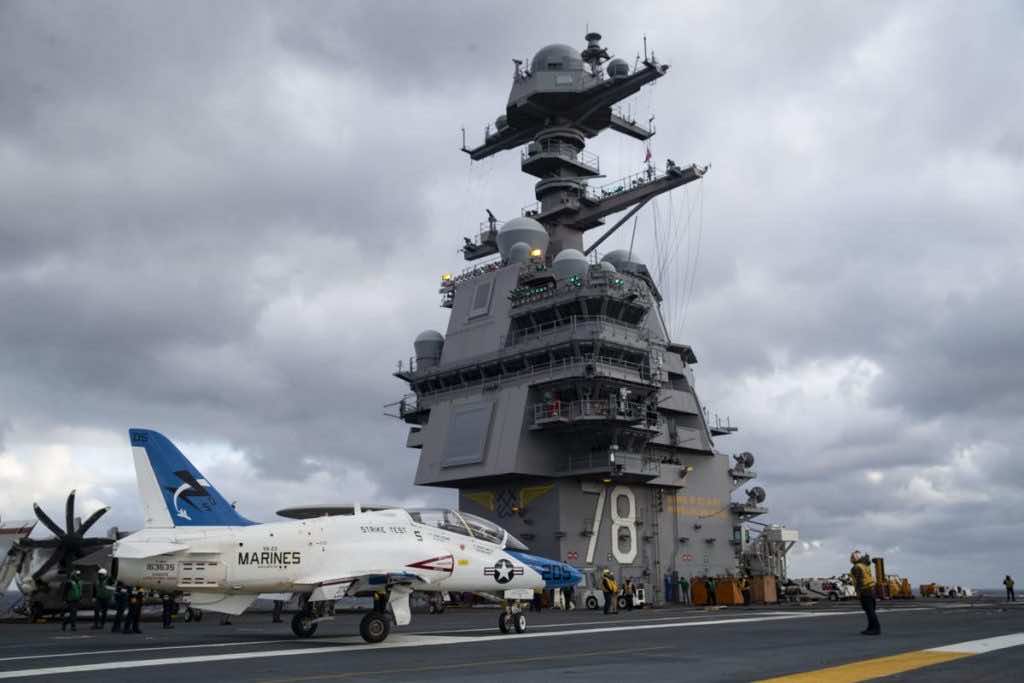The Gerald R. Ford class is the future aircraft carrier replacement class for Enterprise and Nimitz class aircraft carriers for the U.S. Navy. The Gerald R. Ford class will be the premier forward asset for crisis response and early decisive striking power in a major combat operation. Gerald R. Ford class aircraft carriers and carrier strike groups will provide the core capabilities of forward presence, deterrence, sea control, power projection, maritime security and humanitarian assistance. The class brings improved warfighting capability, quality of life improvements for our Sailors and reduced total ownership costs.

Construction began on 11 August 2005, when Northrop Grumman held a ceremonial steel cut for a 15-ton plate that forms part of a side shell unit of the carrier. The keel of Gerald R. Ford was laid down on 13 November 2009. She was christened on 9 November 2013. As of 2017, she is the world’s largest aircraft carrier, and the largest warship ever constructed in terms of displacement.

The CVN-78 is designed to operate effectively with nearly 700 fewer crew members than a CVN-68-class ship. Improvements in the ship design will allow the embarked air wing to operate with approximately 400 fewer personnel. New technologies and ship design features are expected to reduce watch standing and maintenance workload for the crew. The Gerald R. Ford class is designed to maximize the striking power of the embarked carrier air wing. The ship’s systems and configuration are optimized to maximize the SGR of attached strike aircraft, resulting in a 25 percent increase in SGR over the Nimitz class. The new launch and landing systems provide key tools for a significant reshaping of the operational tempo for the large deck carrier. Replacing traditional steam catapults, the Electromagnetic Aircraft Launch System (EMALS) will launch all carrier aircraft. The new launch system allows for a wider range of aircraft to operate from the carrier; the new arresting gear system can recover them. The ability to mix and match the current air fleet and the future one is significantly enhanced with EMALS, which will allow everything from F-35s to the fleet’s future unmanned aircraft to take off and land aboard the new class of carriers. The same flexibility exists in the Advanced Arresting Gear with larger current operating wind and weight envelopes and the ability to recover future aircraft designs with minimal modifications required.
The Ford’s flight deck differs substantially from those of the Nimitz class. The island has been moved 140 feet aft and is 30% smaller. This allows significant additional space for aircraft refueling and weapons loading operations, with the area forward of the island able to accommodate more combat aircraft. During flight operations, Ford’s design increases the amount of usable space forward of the island and reduces the amount unusable space aft.



